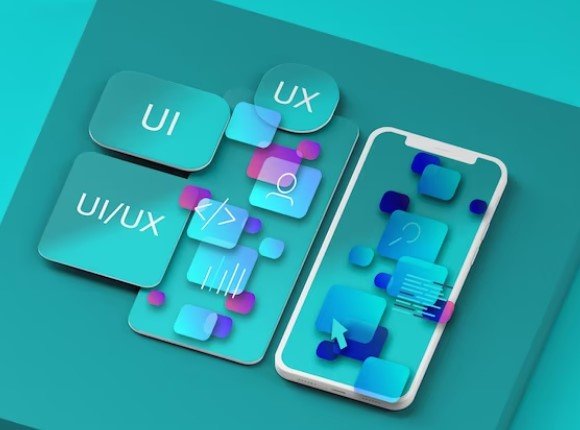
Do you need a degree to be a UI designer?
Introduction to the World of UI Design
The Evolving Landscape of UI Design
The world of UI Design is an ever-changing realm where creativity meets technology. This field is at the forefront of defining how users engage with digital environments, blending visual aesthetics with functional design. It’s a dynamic space where trends and technologies evolve rapidly, making it an exciting and challenging career choice. Designers in this field are tasked with creating interfaces that are not only visually appealing but also intuitive and user-friendly.
The Intersection of Creativity and Technology
At its core, UI Design is about problem-solving through design. It requires a deep understanding of how users interact with technology and how visual elements can enhance this interaction. This blend of creativity and technology makes UI Design unique. Designers must keep pace with the latest design tools and digital trends while maintaining a strong foundation in traditional design principles.
Understanding the Role of a UI Designer
Crafting Digital Experiences
UI Designers are pivotal in shaping the user’s experience with digital products. They are responsible for the look and feel of websites, applications, and software systems. Their role goes beyond making things look attractive; they ensure that digital products are intuitive, accessible, and easy to navigate. This involves a deep understanding of user needs and behaviors, as well as the ability to translate these into a coherent visual language.
Influencing User Interaction
The work of a UI Designer directly influences how users interact with technology. By focusing on the layout of an application or website, the choice of colors, typography, and imagery, UI Designers create an environment that guides users through a digital experience. Their designs help users accomplish tasks efficiently, making the user journey as smooth and enjoyable as possible. The goal is to create interfaces that users find both aesthetically pleasing and functional, leading to a positive user experience and increased user engagement.

Mastering UI Design Fundamentals
Essential Skills and Knowledge for UI Designers
Successful UI Designers blend creative skills with technical know-how. This fusion enables them to create designs that are not only visually appealing but also functionally effective. Key skills include an understanding of color theory, typography, and layout principles. Additionally, a solid grasp of user psychology and accessibility standards is crucial in designing interfaces that cater to diverse user needs.
Learning Industry-Standard Design Toolsex
In the realm of UI design, proficiency in tools like Adobe XD, Sketch, and Figma is crucial. These tools enable designers to create wireframes, prototypes, and high-fidelity designs. Adobe XD is known for its vector design capabilities and integration with other Adobe products. Sketch, exclusive to Mac, is renowned for its simplicity and powerful plugins. Figma, a web-based tool, allows for easy collaboration and is gaining popularity for its versatility and user-friendly interface.
Building a Strong UI Design Portfolio
Strategies for Showcasing Your Skills
A well-crafted portfolio is essential for demonstrating your design skills and thought process to potential employers or clients. It should include a variety of projects showcasing your ability to solve different design challenges. Each project should be presented with a clear narrative, explaining the problem, your design process, and the final solution. This storytelling approach helps viewers understand your design thinking and skill set.
Tips on Portfolio Development
Creating a portfolio that displays a range of skills and projects is key. It should include both individual and collaborative works, demonstrating your ability to work in a team. Projects should highlight your proficiency in different stages of the design process, from research and conceptualization to execution and user testing. Including case studies and reflecting on what you learned or would do differently adds depth to your portfolio.
The Importance of Networking in the UI Design Industry
Networking in the UI design industry can open doors to new opportunities and collaborations. Engaging in design communities, attending industry events, and connecting with fellow designers on platforms like LinkedIn or Behance can expand your professional circle. These connections can lead to job opportunities, collaborative projects, or mentorship.
How to Find and Learn from a UI Design Mentor
Finding a mentor in UI Design can provide invaluable guidance and insight. To find a mentor, start by identifying experienced designers whose work you admire and reaching out to them through social media or professional events. Be clear about what you’re seeking from the mentorship and be respectful of their time. A good mentor can provide feedback on your work, advice on career decisions, and introduce you to industry networks.
Gaining Practical Experience in UI Design
Real-World Experience vs. Formal Education
While formal education in UI Design provides a structured learning environment, hands-on experience is equally valuable. Real-world projects challenge you to apply your skills in practical scenarios and adapt to real user needs. This experience is highly valued by employers and can sometimes outweigh academic qualifications.
Opportunities for Hands-On Learning
Internships, freelance projects, and collaborative work offer practical experience in UI Design. Internships provide an opportunity to work in a professional setting and understand the industry’s workings. Freelance projects allow you to build a diverse portfolio and gain experience in managing client relations. Collaborative projects, especially in a multidisciplinary team, can enhance your understanding of how UI Design integrates with other fields such as UX Design and development.

Educational Requirements for Aspiring UI Designers
The debate around the necessity of a formal degree for a career in UI design is ongoing. On one hand, a degree can provide a comprehensive foundation in design principles, user experience, and technology. It also offers structured learning and access to experienced faculty and industry connections. On the other hand, the fast-paced nature of the tech industry means that practical, hands-on experience can be equally valuable. Aspiring UI designers must weigh the benefits of formal education against its cost and time investment, considering their personal learning style and career goals.
Exploring Academic Pathways for UI Design
Overview of Common Degrees in UI Design
Common degree programs for UI design include Bachelor’s and Master’s degrees in Graphic Design, Digital Media, Human-Computer Interaction, and Visual Arts. These programs often cover a range of topics, including visual design, user experience (UX) design, coding, and interactive media. Students gain theoretical knowledge and practical skills in designing user-friendly interfaces, with opportunities for internships and portfolio development.
Key Insights into UI Design Education
A formal education in UI design not only covers the technical skills required but also provides a broader understanding of design theory, user psychology, and digital media. It fosters critical thinking, problem-solving, and collaborative skills, which are crucial in the design process. Additionally, degree programs often include courses on the business aspects of design, preparing students for the commercial side of their future careers.
Alternative Routes into UI Design Without a Degree
Embracing Self-Learning and Online Resources
For those without access to formal education or looking to supplement it, the internet is a treasure trove of resources. Online platforms offer courses, tutorials, and workshops covering every aspect of UI design. These resources range from beginner-friendly introductions to advanced skills in specific software or design methodologies. Self-learning requires discipline and motivation but can be a flexible and cost-effective way to acquire UI design skills.
Benefits of Bootcamp Courses in UI Design
Bootcamp courses present an increasingly popular alternative to traditional degrees. These intensive, short-term programs are focused on practical skills and industry-relevant projects. They are designed to equip students with the tools and knowledge needed to enter the job market quickly. Bootcamps often offer career services and networking opportunities, making them a viable option for career changers or those looking to quickly break into the field of UI design.

Continuous Learning and Career Growth in UI Design
Keeping Up with Industry Trends
In the rapidly evolving field of UI design, staying abreast of the latest trends and technological advancements is crucial. The digital design landscape is continuously changing, with new tools, techniques, and design philosophies emerging regularly. UI designers must keep themselves informed about these developments to remain competitive and effective in their work. This can involve subscribing to industry publications, attending webinars and conferences, participating in online forums, and following influential designers and thought leaders. Adapting to new trends not only enhances a designer’s skill set but also ensures that their work remains relevant and impactful.
Evolving Your Skills Over Time
The journey of a UI designer is one of constant learning and skill development. As digital platforms and user expectations evolve, so must the skills and techniques of a UI designer. This might mean learning new software, experimenting with different design methodologies, or understanding the intricacies of user psychology and behavior. Additionally, soft skills like communication, collaboration, and project management are equally important and must be honed over time. A commitment to lifelong learning and a willingness to adapt are essential traits for success and growth in the UI design profession.
Conclusion
Becoming a successful UI designer is a journey that can be embarked upon through various paths. Whether one opts for a formal degree in design, chooses to attend bootcamp programs, or embarks on a self-taught route, the foundation of a successful career in UI design lies in a solid understanding of design principles and user-centered design approaches. Equally important is the commitment to continuous learning and adaptation to keep up with the ever-changing landscape of technology and user preferences. Building and constantly refining a strong portfolio that showcases one’s skills and projects is critical. In the end, regardless of the path chosen, dedication, creativity, and a keen eye for detail are the hallmarks of a skilled UI designer, leading to a rewarding and dynamic career in this exciting field.

As a seasoned professional with a unique blend of skills in Computer Design and Digital Marketing, I bring a comprehensive perspective to the digital landscape. Holding degrees in both Computer Science and Marketing, I excel in creating visually appealing and user-friendly designs while strategically promoting them in the digital world.

